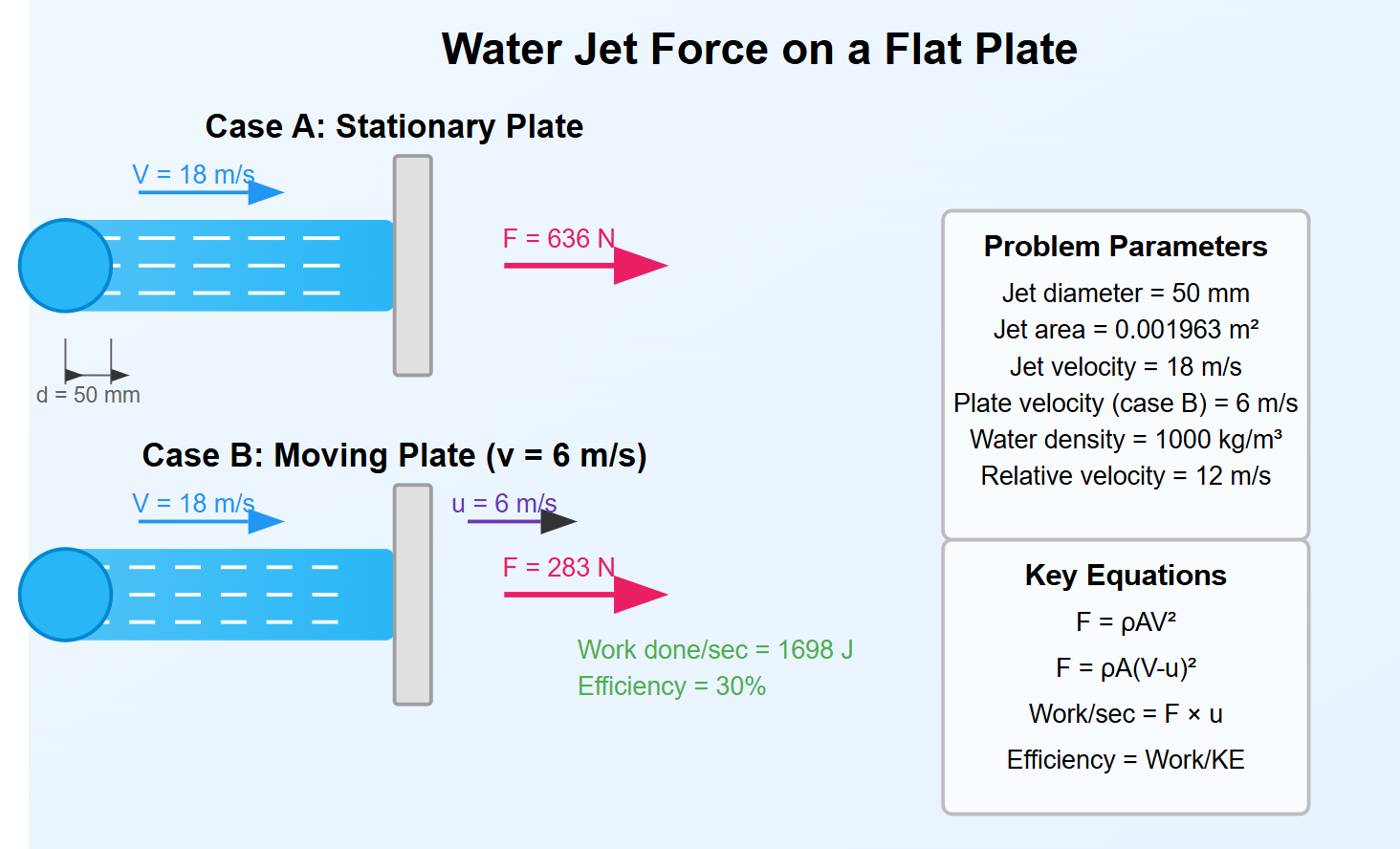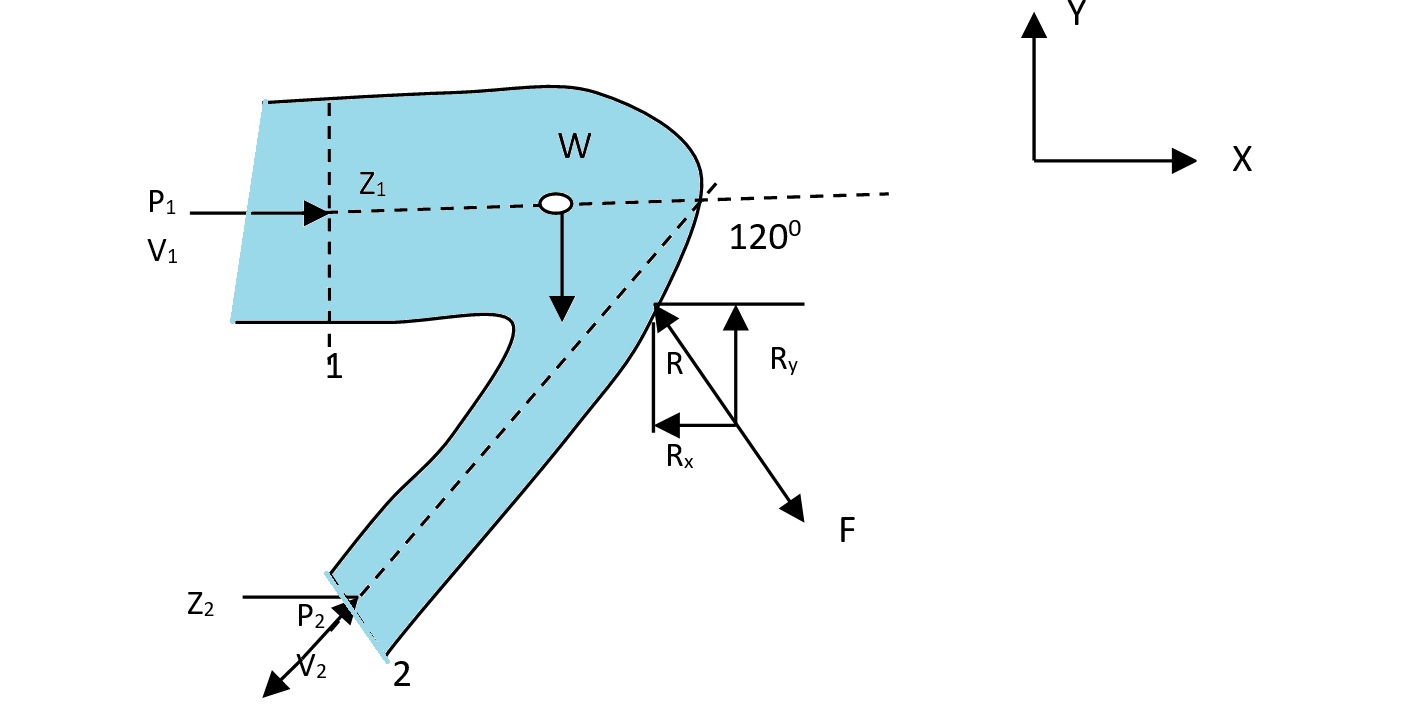A water jet of 20mm diameter moving with a velocity of 5m/s strikes a fixed plate at an angle of 20° to the horizontal. Compute the amount of flow on each side of the plate and the force exerted on the plate.
Fluid Mechanics Problem Solution Problem Statement A water jet of 20mm diameter moving with a velocity of 5m/s strikes a […]












